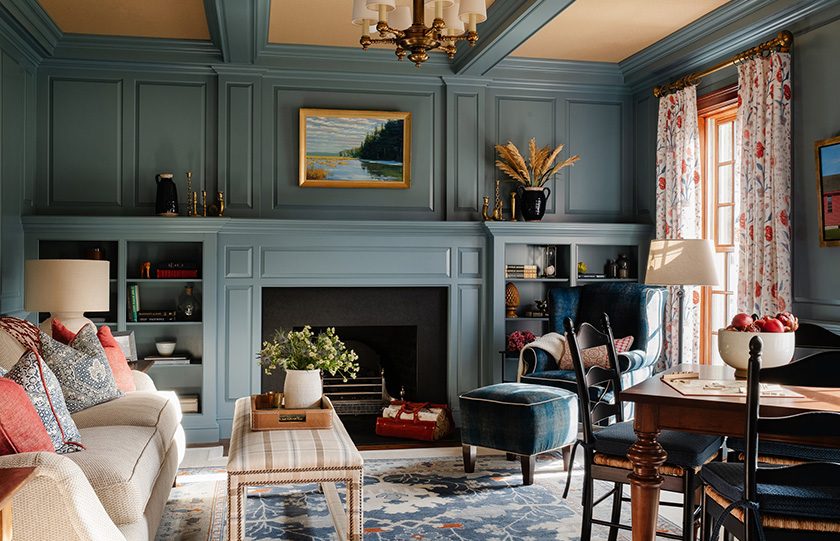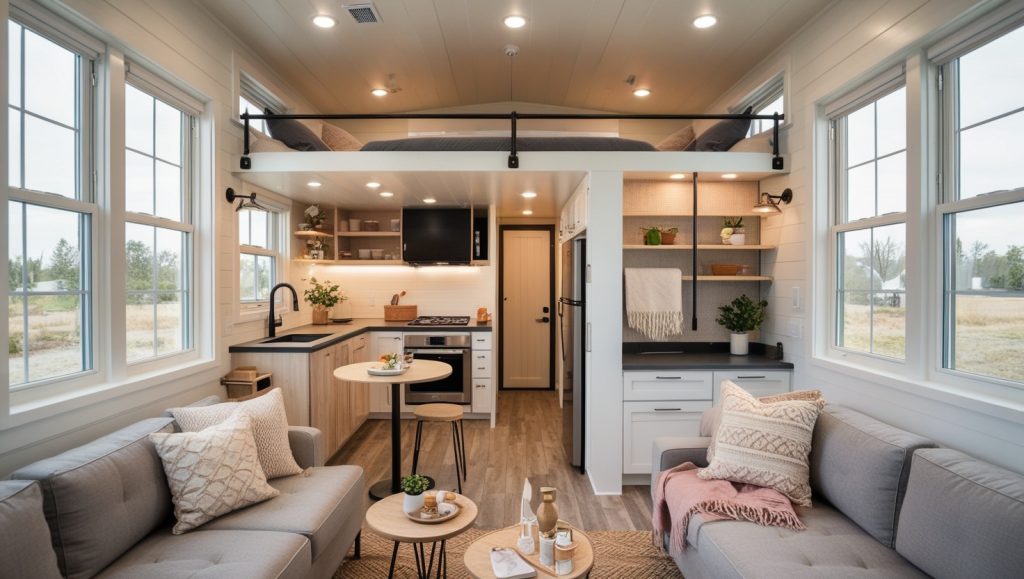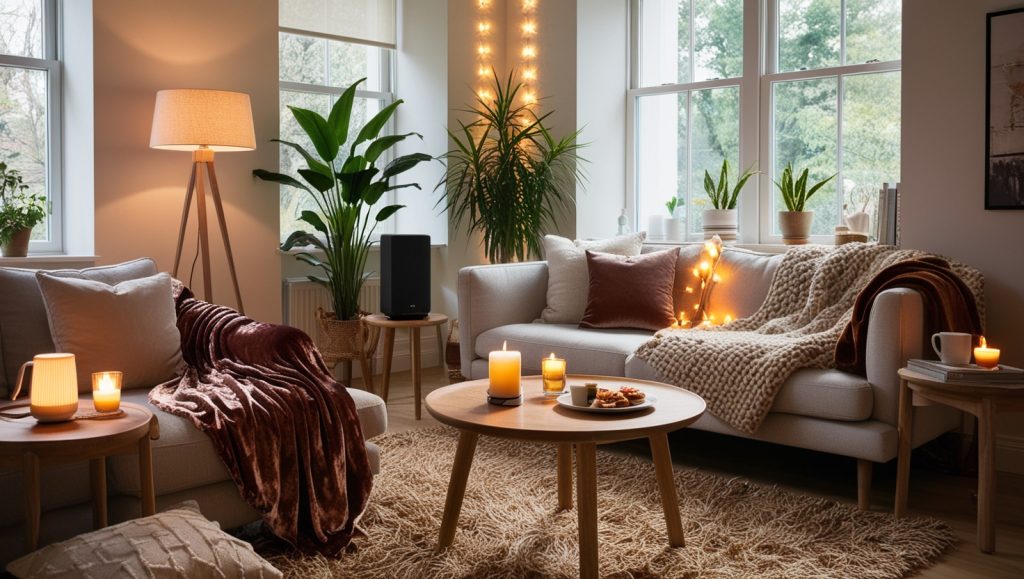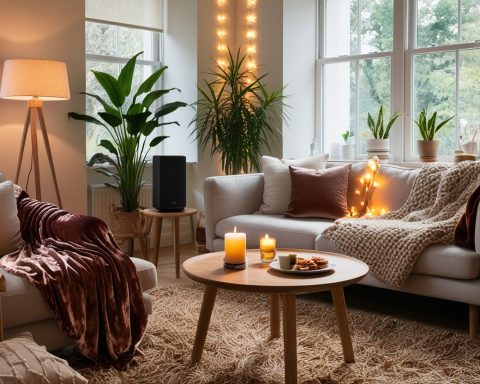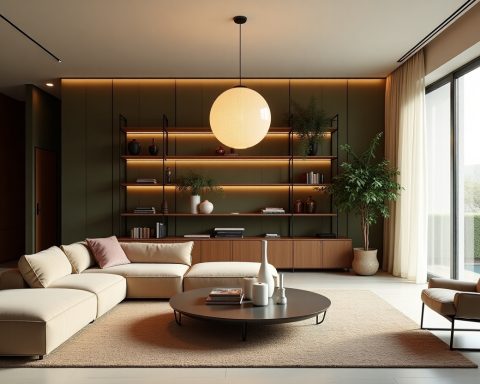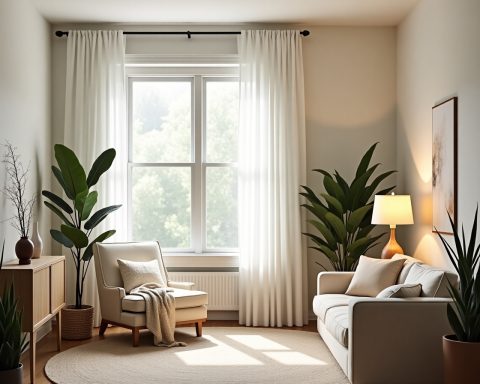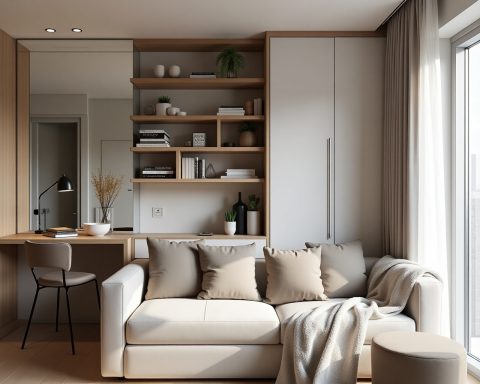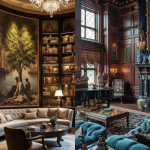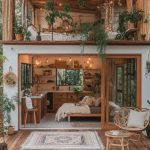In the ever-evolving world of interior design, traditional rules are being boldly challenged. Homeowners and designers alike are embracing rebellious aesthetics, transforming conventional spaces into extraordinary environments that redefine creativity, comfort, and personal expression. These “Rebel Rooms” are not just about being different—they’re about creating meaningful, functional, and visually captivating spaces that push the boundaries of what a room should be.
What Are Rebel Rooms? A Design Philosophy Redefined
Rebel Rooms are not simply chaotic or random in design—they are thoughtfully curated spaces that intentionally reject outdated norms. From clashing patterns to bold color choices, the core of rebel design lies in breaking free from constraints that limit creativity.
Rather than adhering to minimalism or cookie-cutter layouts, rebel rooms are designed with authenticity, individuality, and purpose. Think deep emerald walls paired with neon pink sofas, antique chandeliers above industrial steel tables, and vintage art beside abstract installations.
Breaking the Color Rules: Vibrant Palettes That Work
One of the most liberating aspects of rebel rooms is the fearless use of color. Traditional design tells us to pick a palette and stick to it. Rebel design says: why not mix coral with chartreuse or pair black walls with golden yellow ceilings?
We’ve seen walls painted black, once a taboo in design circles, now used to create depth, intimacy, and drama. Ceilings are no longer forgotten spaces—they are canvases painted in sky blues, burnt oranges, and even floral murals, transforming the energy of a room entirely.
Furniture With Personality: Mismatched, Misplaced, Yet Meaningful
Rebel rooms embrace the unexpected pairing of furniture styles and periods. A mid-century modern chair can sit harmoniously beside a bohemian woven ottoman, and a Victorian writing desk can exist peacefully under a modern metal light fixture.
Functionality meets rebellion when furniture is recontextualized. A repurposed ladder becomes a bookshelf, a stack of vintage suitcases forms a nightstand, and a worn piano bench acts as a dining bench, telling stories through form and wear.
The key? Intention over perfection.
Textures and Layers: The Art of Sensory Complexity
Texture in rebel rooms is not subtle—it’s celebratory. Designers layer leather, velvet, concrete, sheepskin, linen, and metal in ways that provoke curiosity and evoke emotion.
Walls may be covered with aged wood panels, juxtaposed with metal grid shelving, or mossy green velvet curtains that puddle onto patterned Moroccan rugs. Layering is not just allowed; it’s encouraged, creating visual intrigue and a sense of warm chaos.
Art and Decor: Storytelling Over Symmetry
Gone are the days of perfectly centered art pieces or meticulously styled shelves. In rebel rooms, walls become storytelling spaces, filled with a mosaic of frames, sizes, and mediums.
A graffiti canvas next to a baroque oil painting, or a sculptural bust wearing sunglasses, all serve to break the fourth wall between viewer and decor. Rebel rooms invite interaction—they’re meant to be touched, questioned, and admired without restraint.
Shelving in rebel rooms might house plants growing wildly, vintage books stacked sideways, and ceramic mugs from local artists—curated not for symmetry, but for soul.
Lighting: Drama, Dissonance, and Daring Choices
Lighting is one of the most impactful tools in a rebel room. Forget matching fixtures or understated sconces. Rebel design incorporates oversized industrial pendants, color-changing LED strips, vintage lanterns, and custom neon signs.
Layered lighting schemes bring spaces to life. A Victorian chandelier might share space with a UFO-inspired desk lamp, both casting different hues and textures into the room, adding dimension and personality.
Lighting in rebel rooms is less about visibility and more about creating mood and energy.
Open Concepts Reimagined: Defining Space Through Creativity
While open floor plans remain popular, rebel rooms resist the idea of blank openness. Instead, they use visual cues and unconventional dividers to define areas.
A hanging tapestry may separate the lounge from the dining area. A row of hanging plants might mark the boundary between a reading nook and the kitchen. Even area rugs with bold prints serve to ground specific zones within a space without the need for walls.
Fluidity is the goal, but creative distinction is what makes each corner unique.
Rebel Kitchens: Functionality Meets Funk
The rebel kitchen is where utility collides with flair. Expect open shelving with rainbow-glazed dishware, brass hardware on painted cabinets, and backsplashes of geometric tile patterns that don’t match but still feel cohesive.
Small appliances are no longer hidden—they’re celebrated. A cherry red espresso machine, a retro mint green blender, or a stainless steel toaster oven with orange knobs serve as focal points.
Rebel kitchens challenge the sterile, stainless-steel expectations and replace them with personality and playfulness.
Bedrooms With Attitude: Sanctuary, But Not Serene
Rebel bedrooms are deeply personal, layered with emotional cues and unconventional choices. You’ll find canopy beds with mismatched curtains, wallpapered accent walls in loud patterns, and nightstands made from tree stumps or crates.
It’s not about what should be there—it’s about what feels right. String lights might hang beside a vintage mirror. An art installation made from old concert tickets could span above the bed, and bedding might be a blend of velvet, linen, and faux fur.
Comfort is key, but so is attitude.
Why Rebel Design Works: Authenticity Wins
The success of rebel rooms lies in authentic expression. These rooms reflect real lives, quirks, interests, travels, dreams, and imperfections. They’re not staged—they’re lived in.
In a world moving toward personalization, cookie-cutter interiors are becoming obsolete. Rebel design creates spaces with soul, and that resonates deeper than any trend.
Final Thoughts: Designing Without Apology
To create a rebel room is to design unapologetically. It means trusting your instincts, embracing imperfections, and letting your space mirror your personality, not the pages of a catalog.
Whether you’re renovating a whole home or adding bold elements to a single room, rebel design invites you to play, question, and create—not for validation, but for true self-expression.
